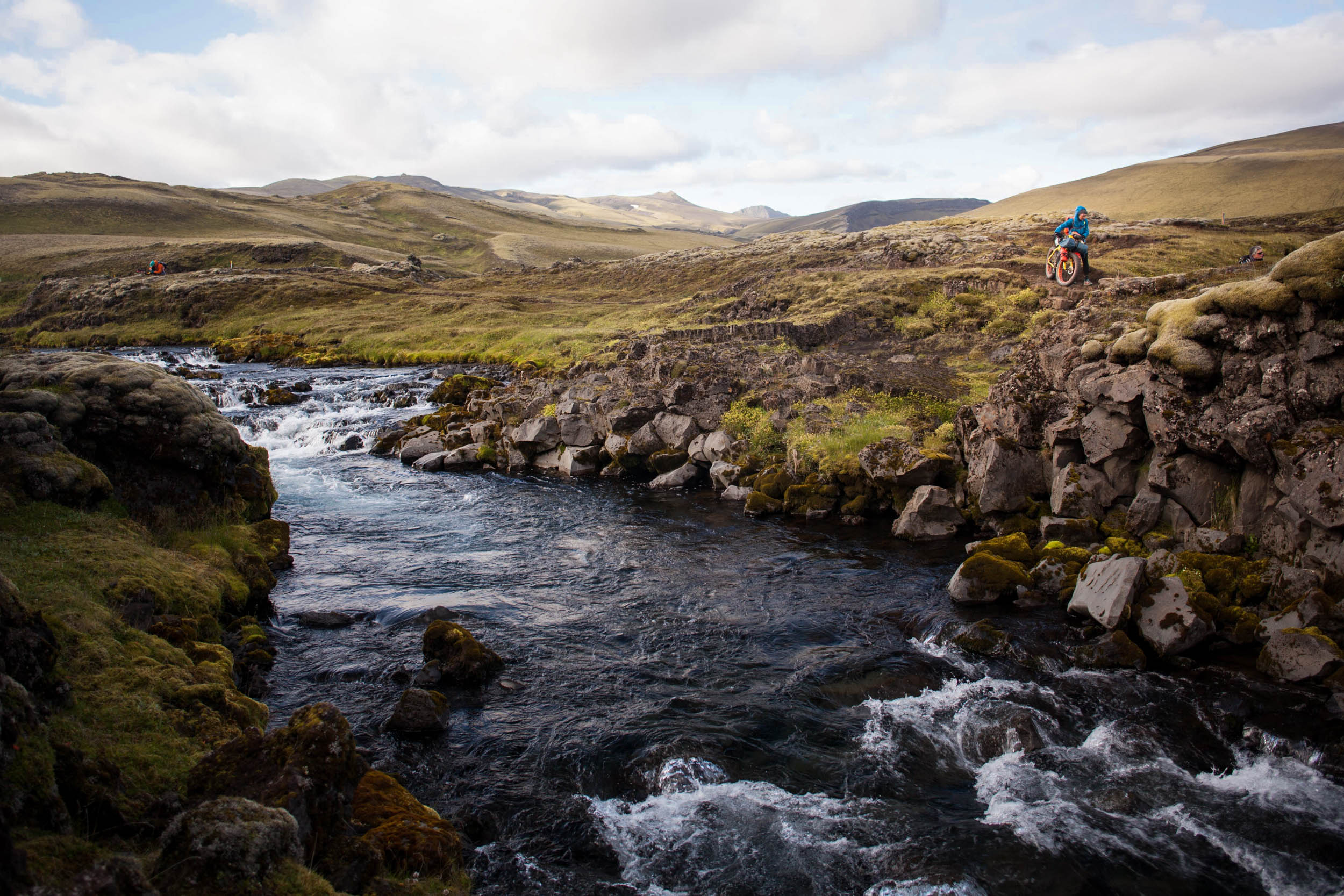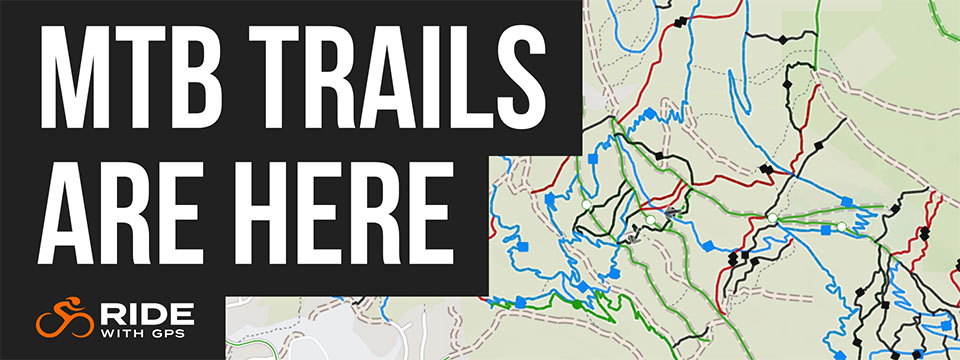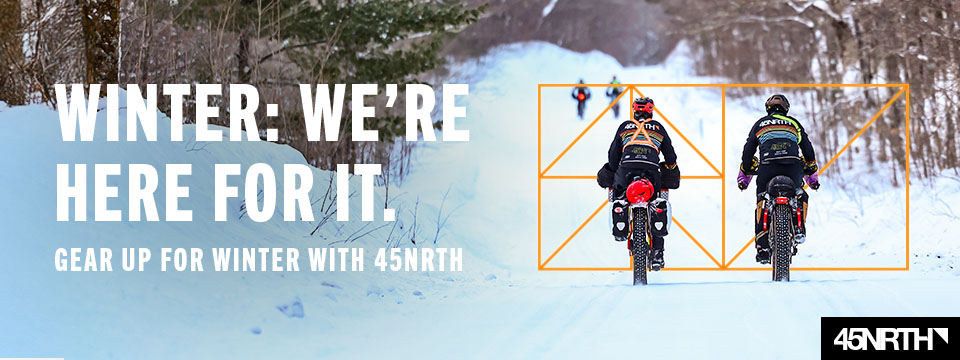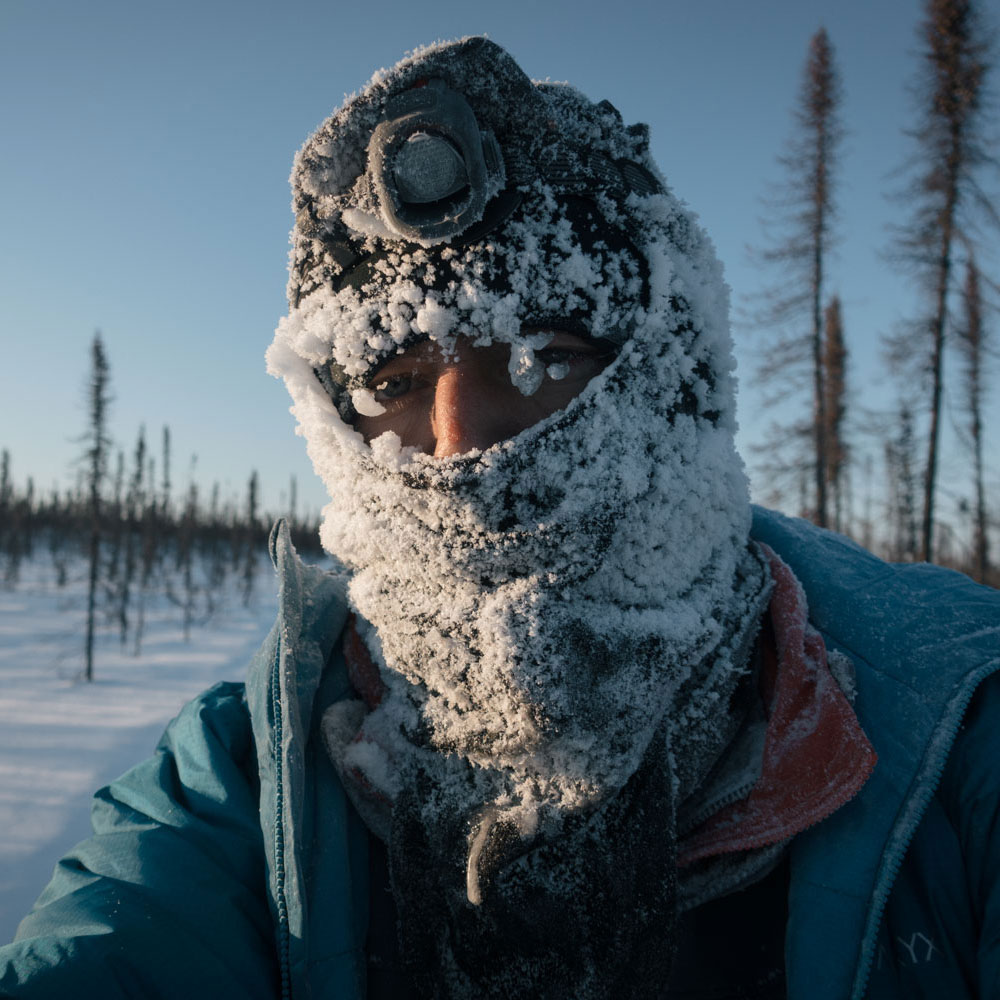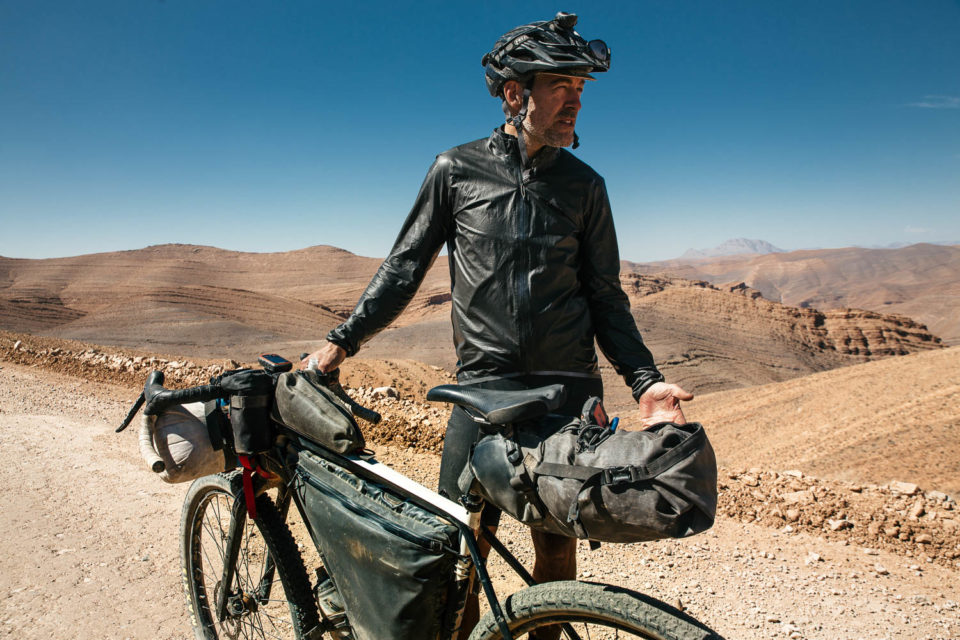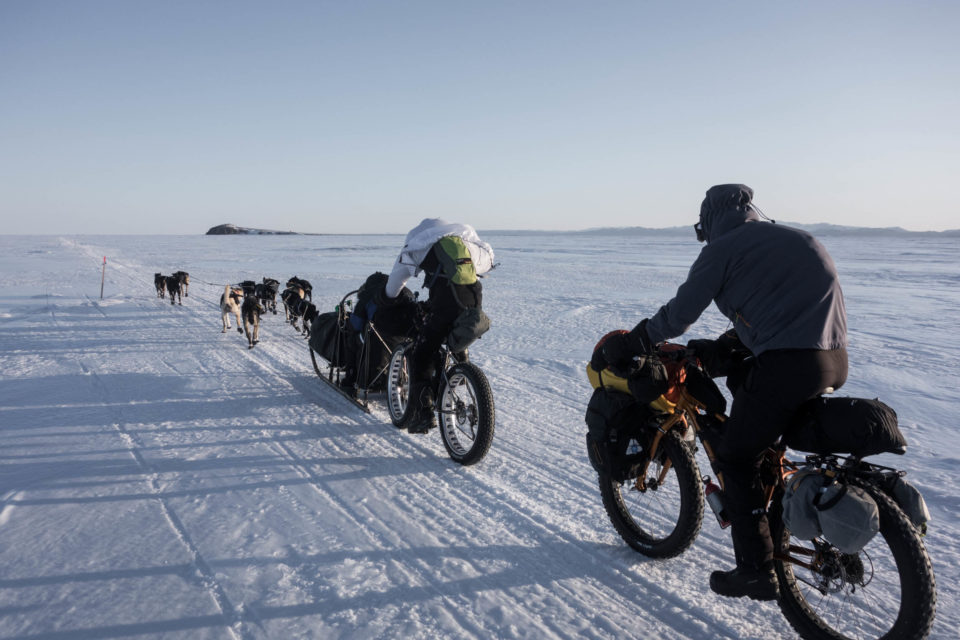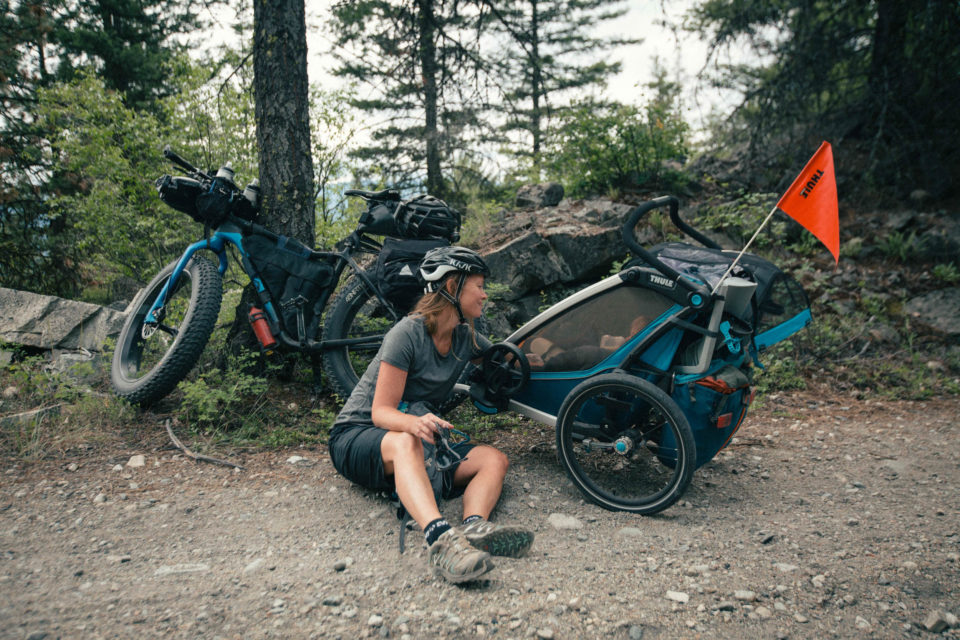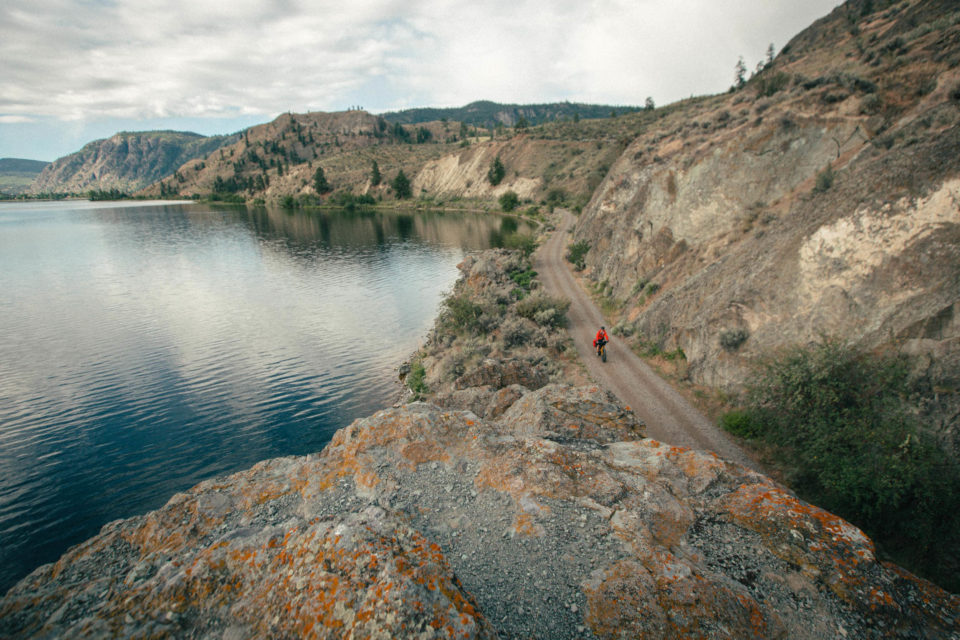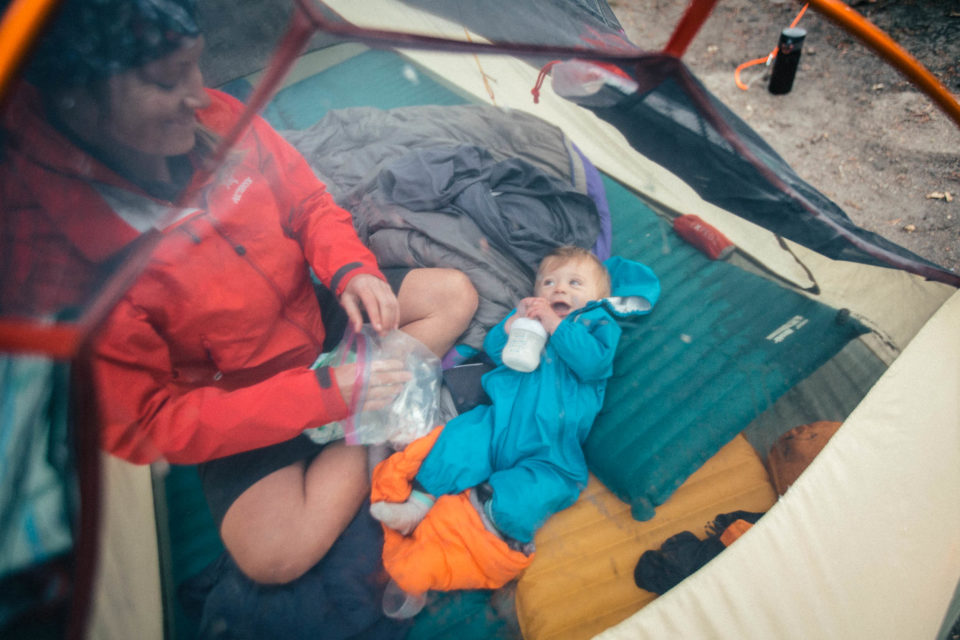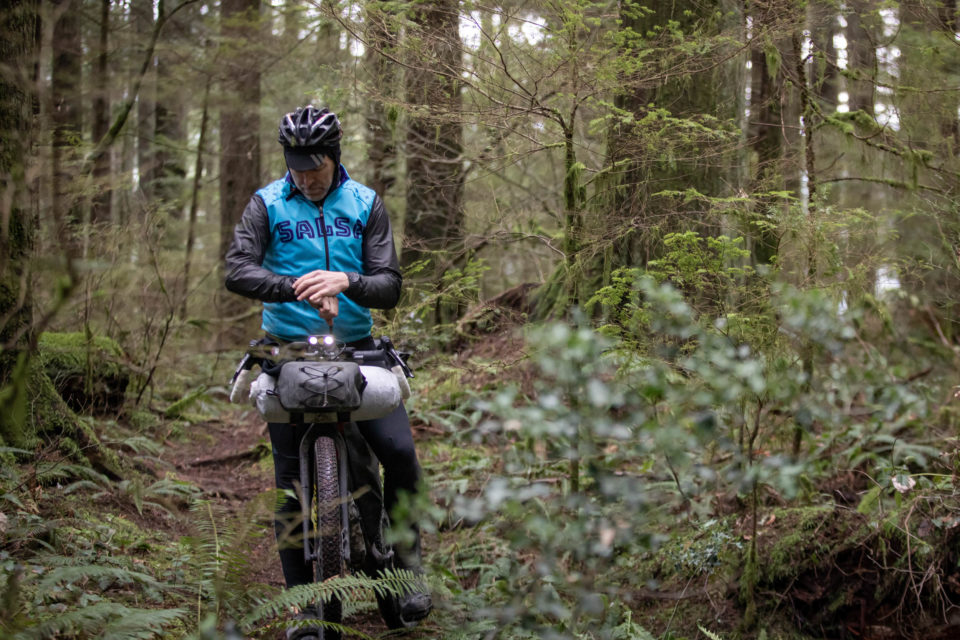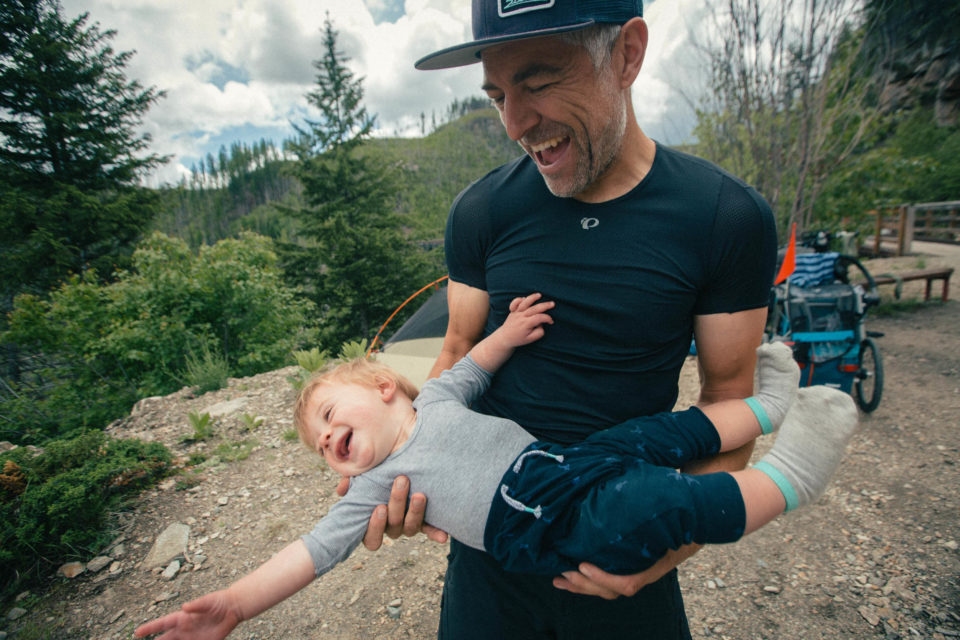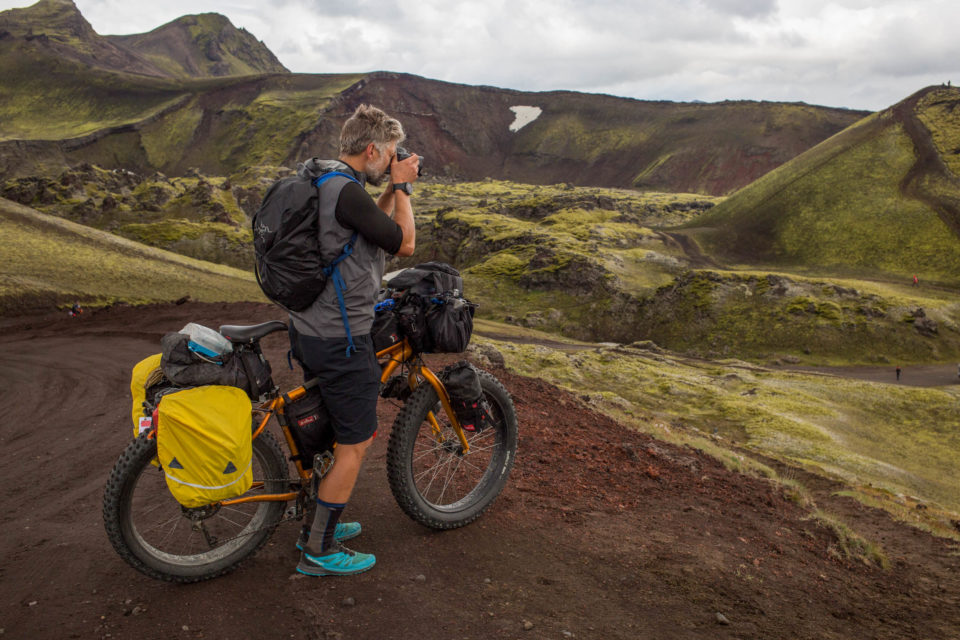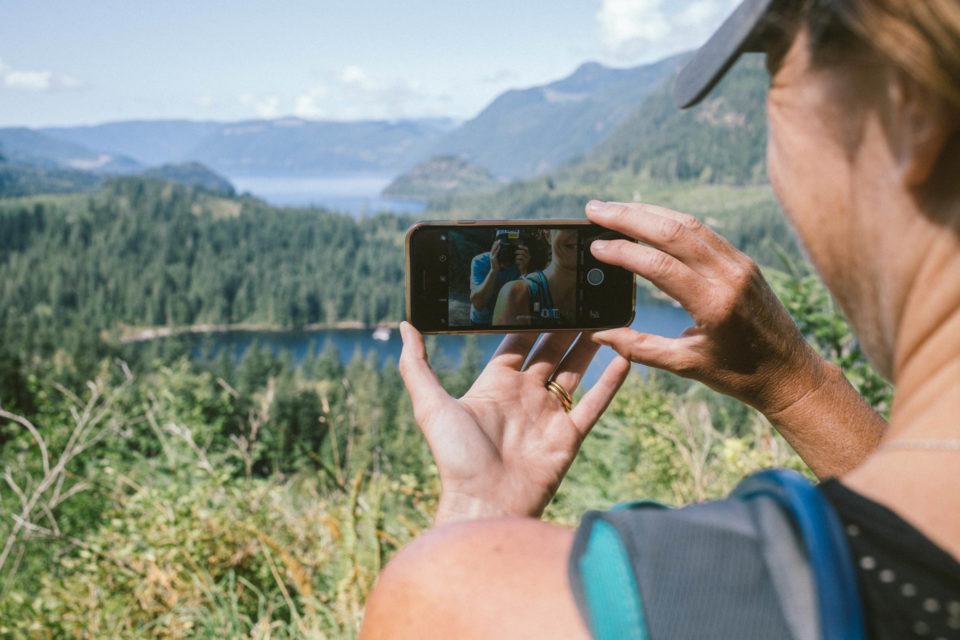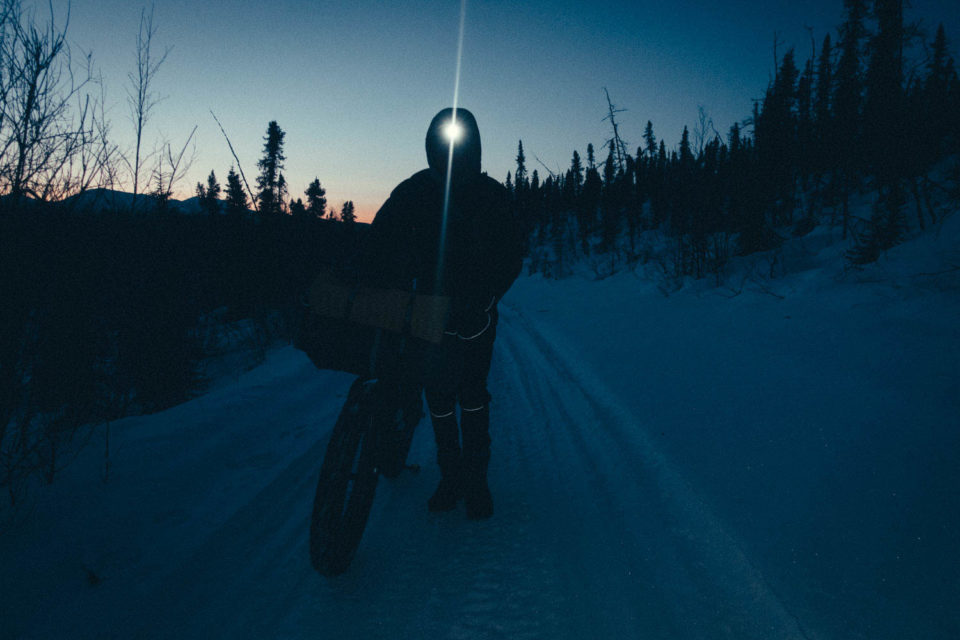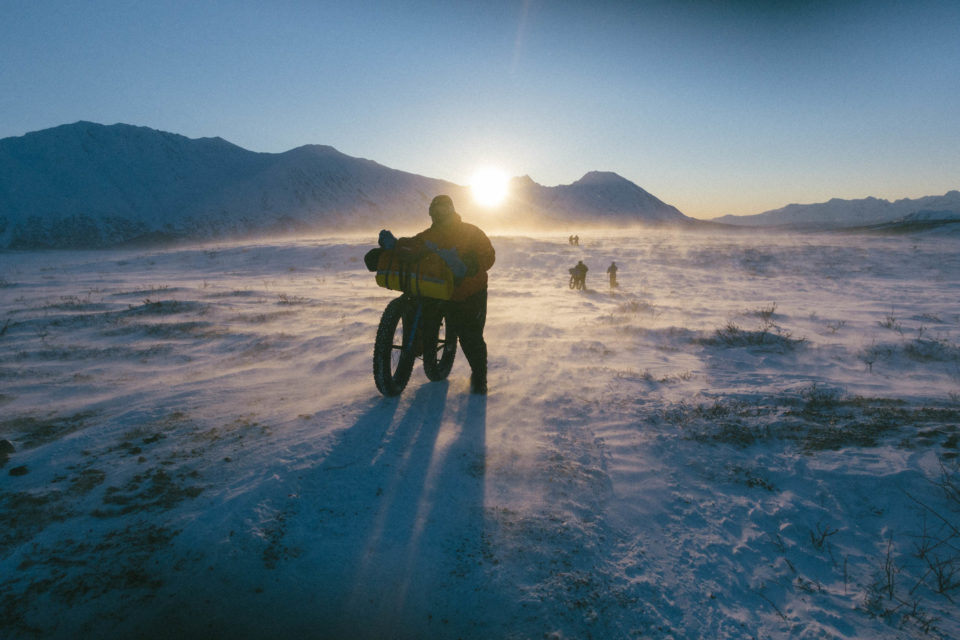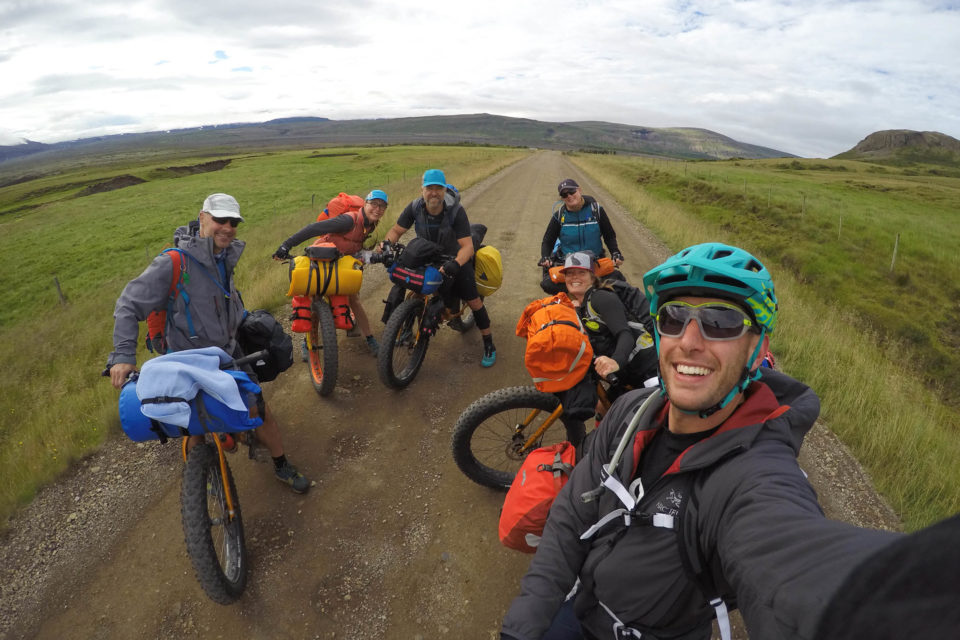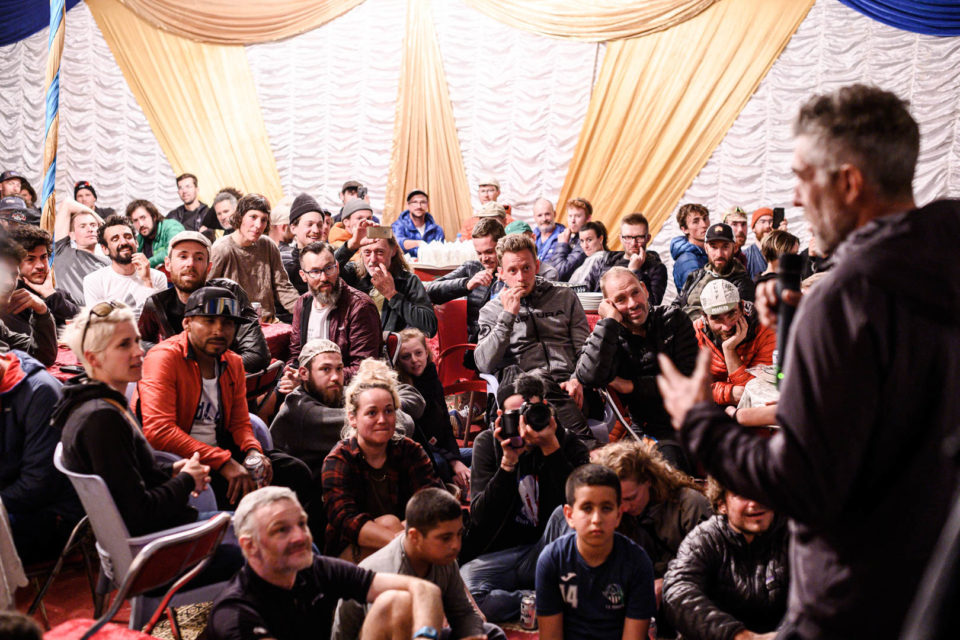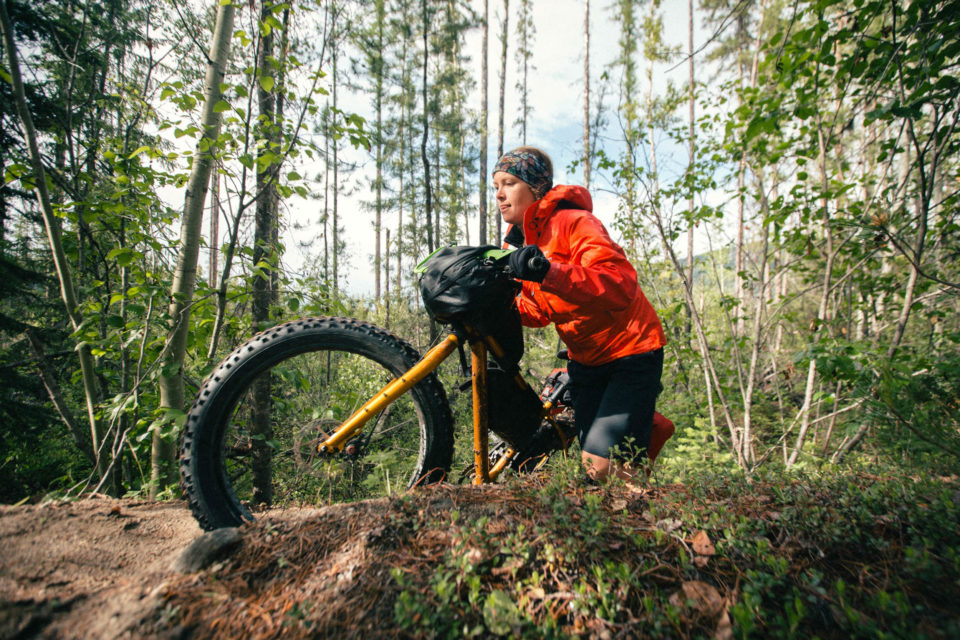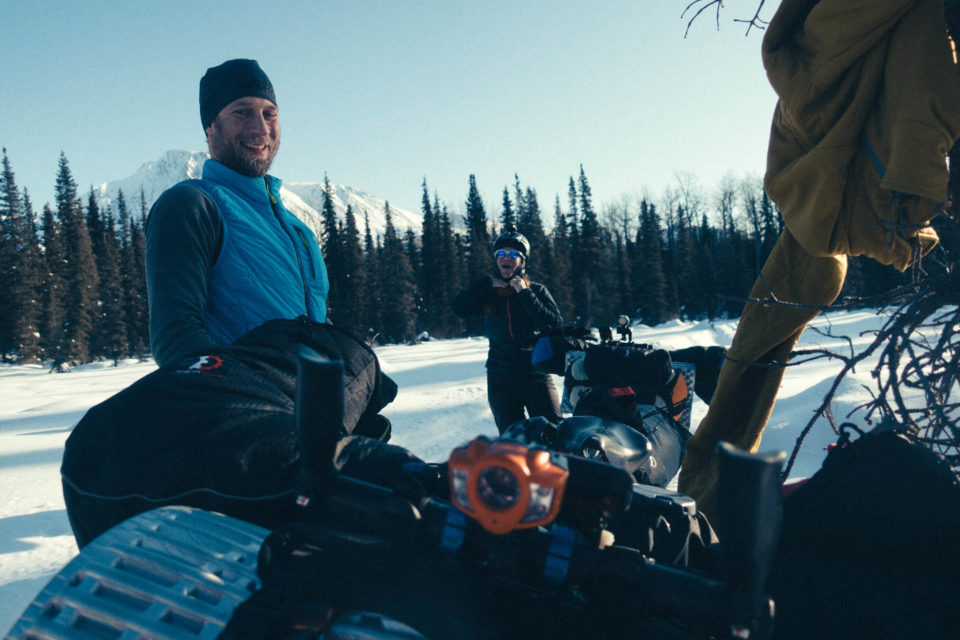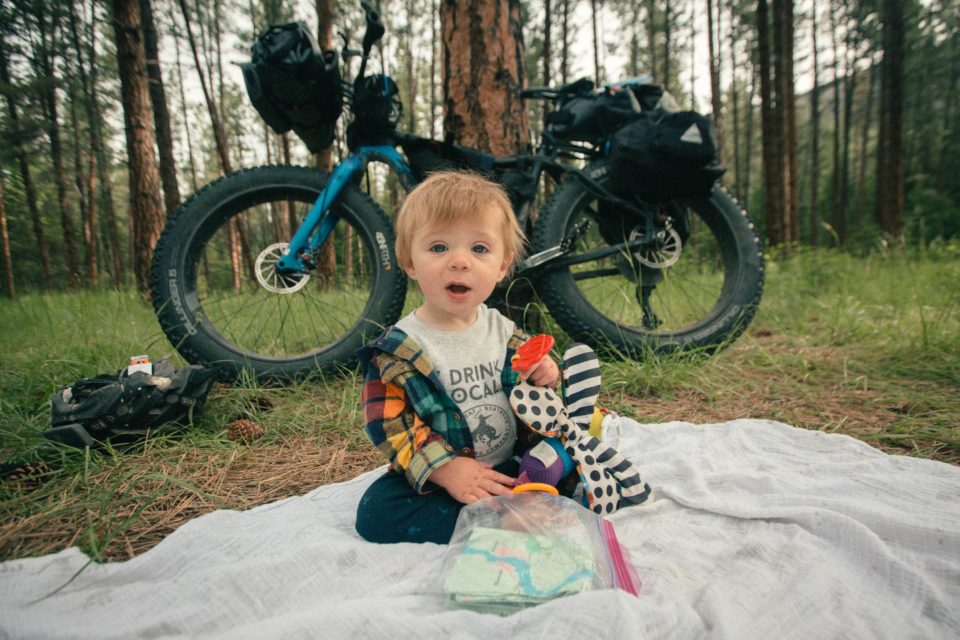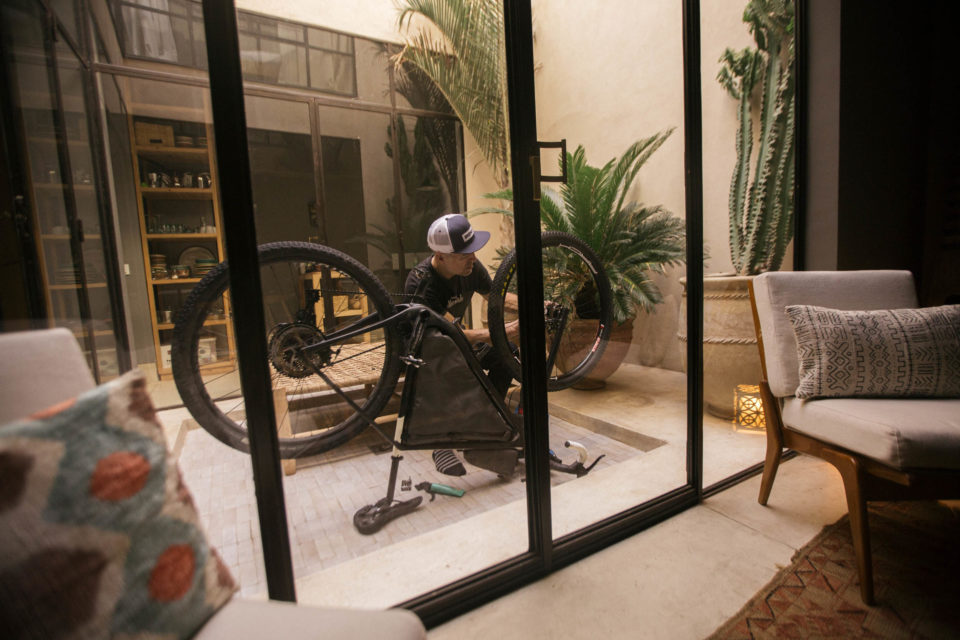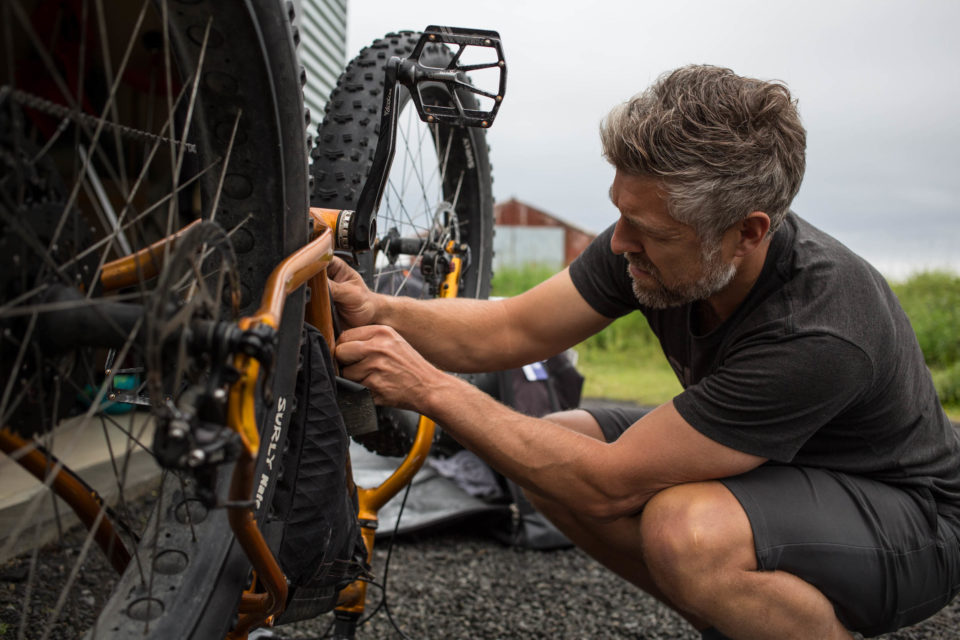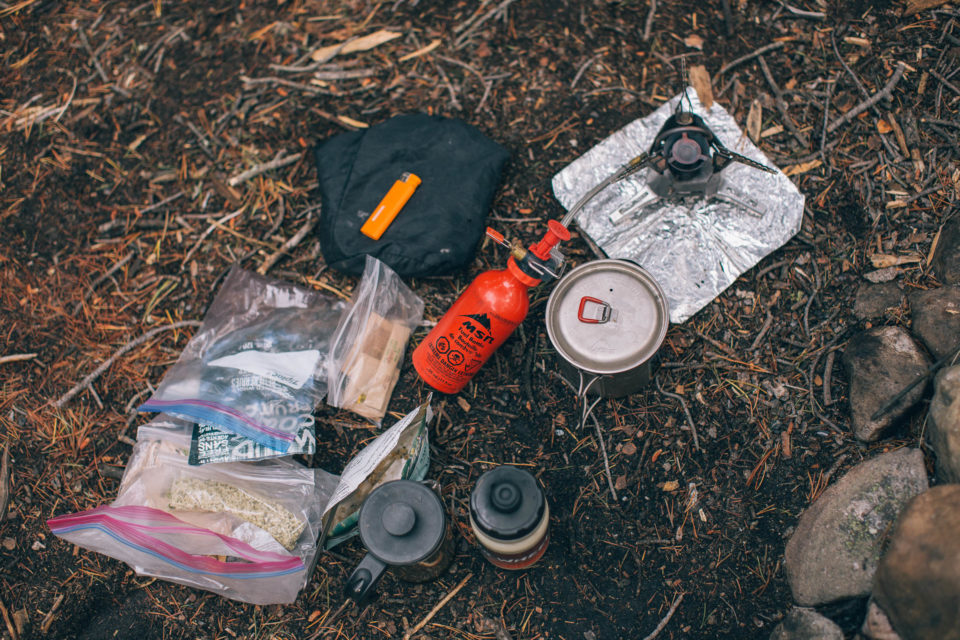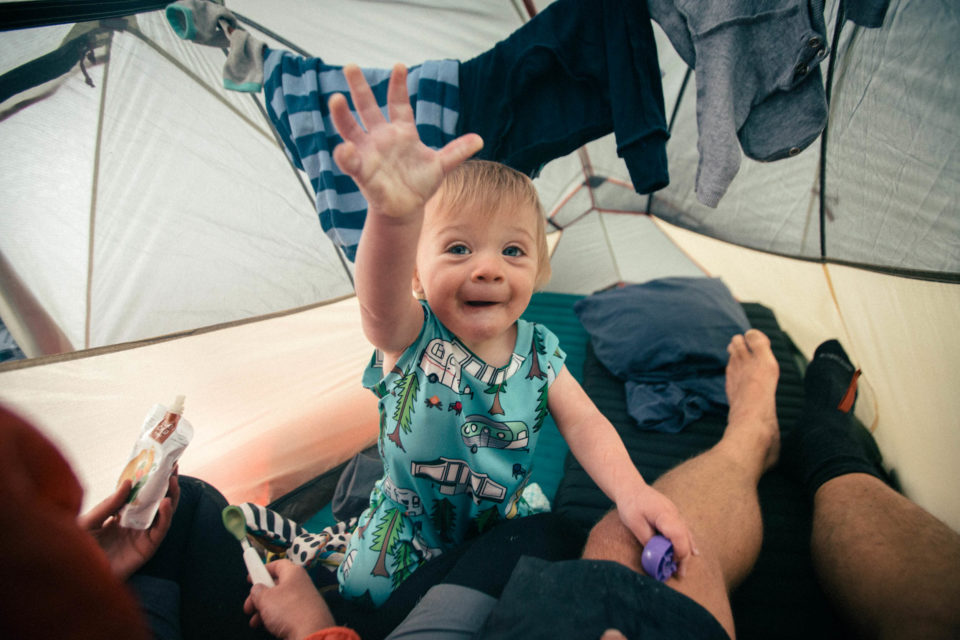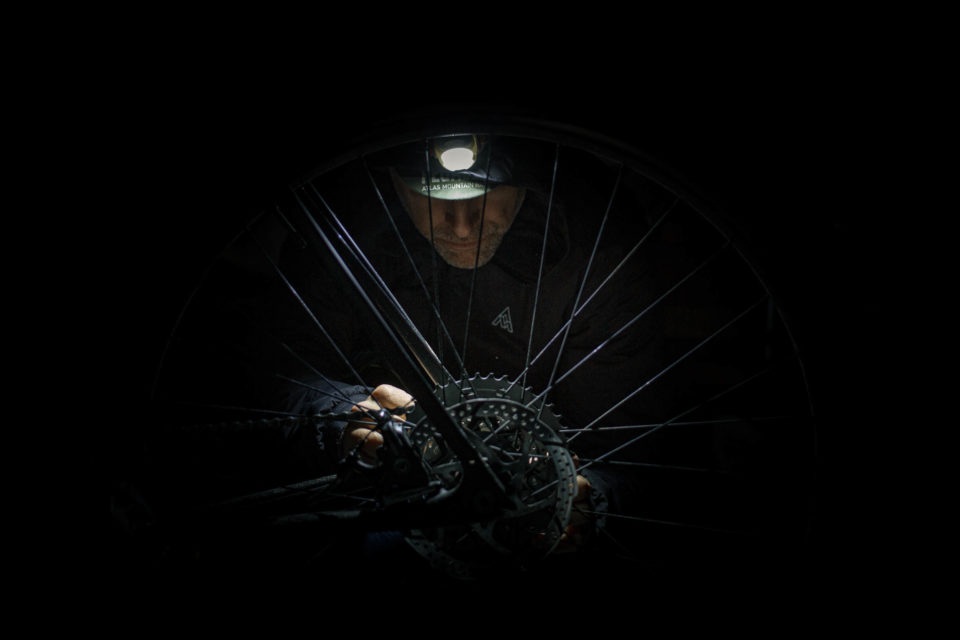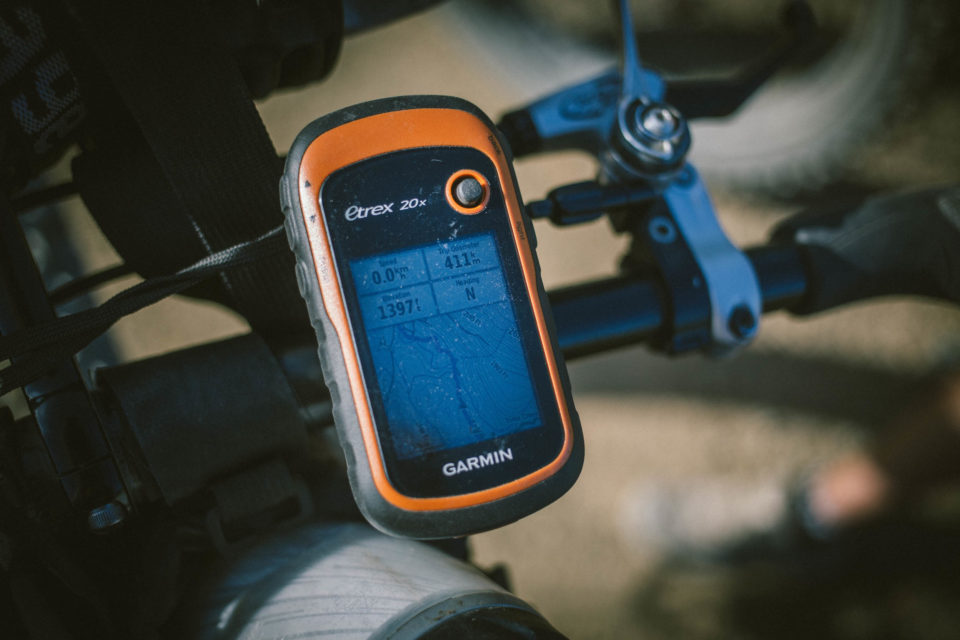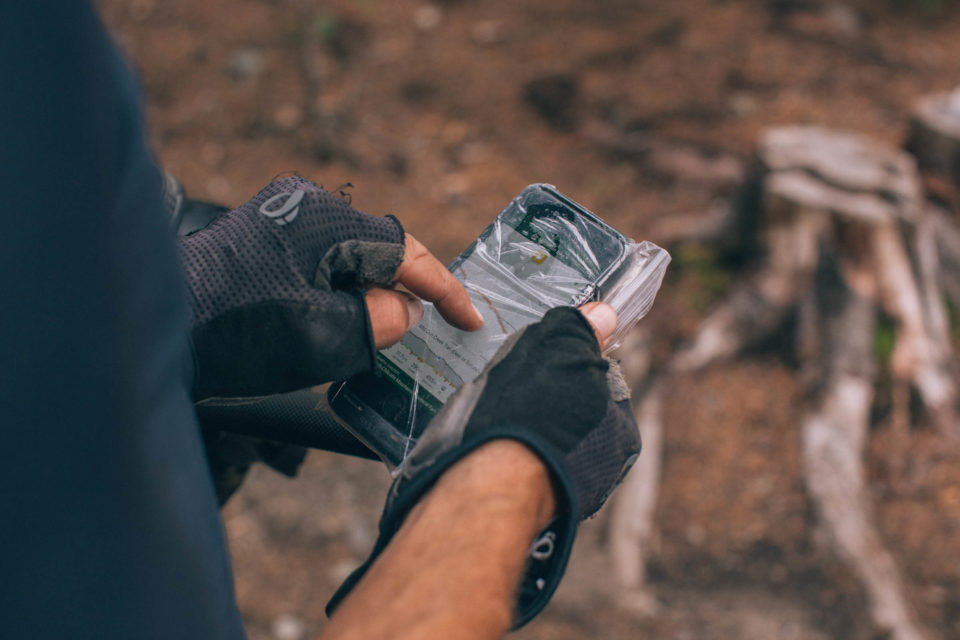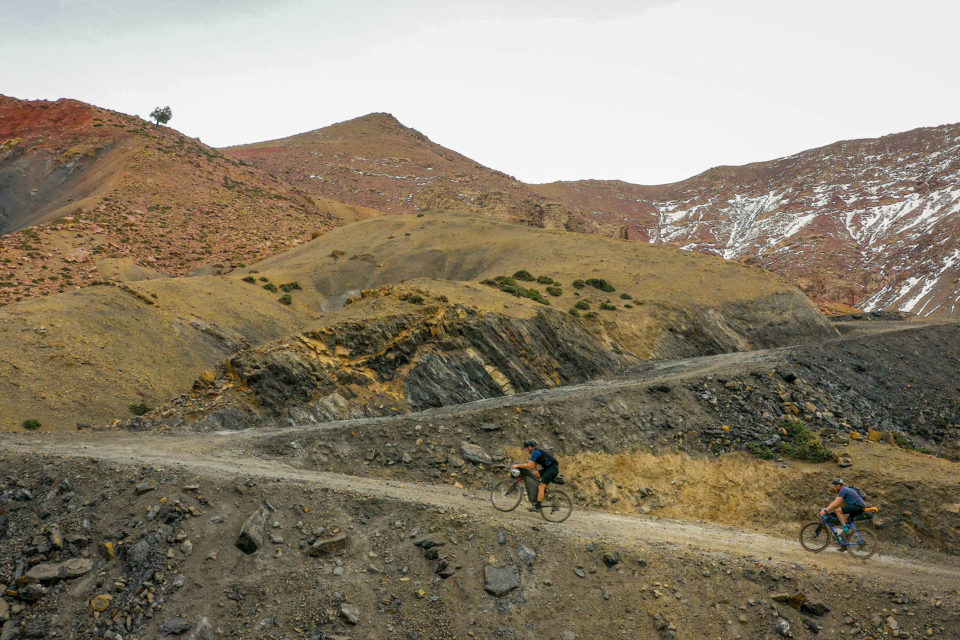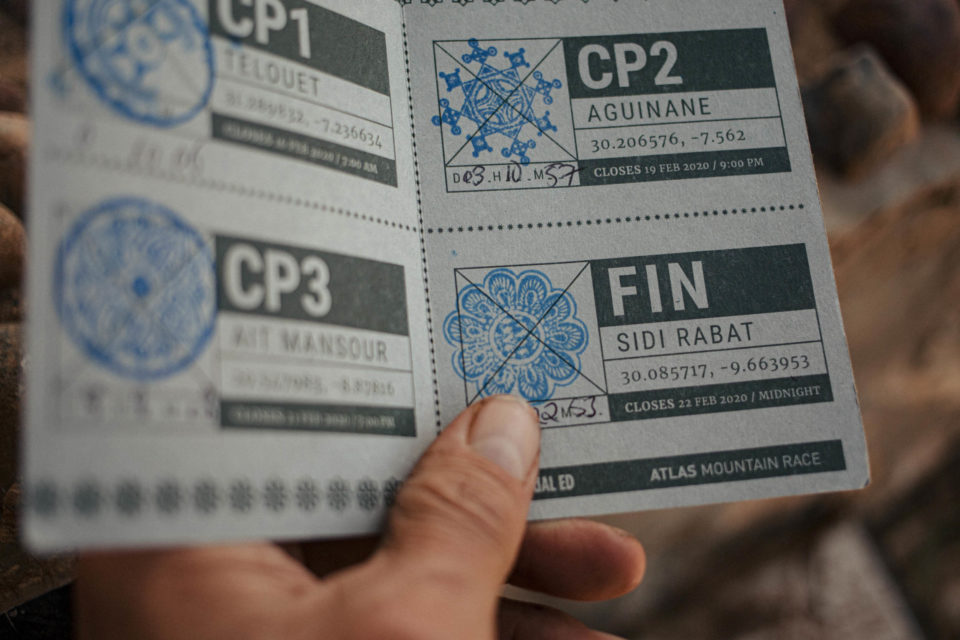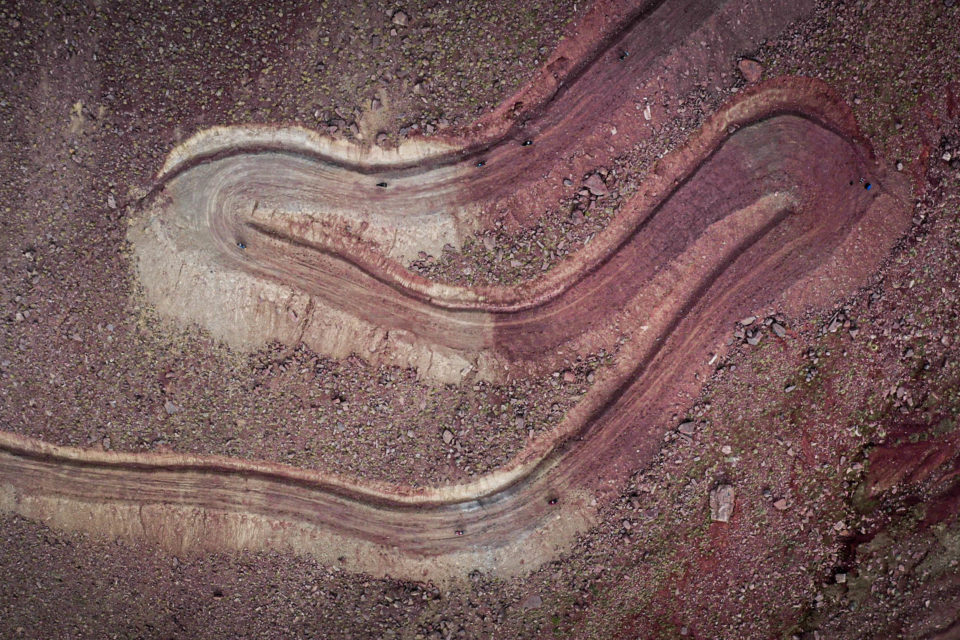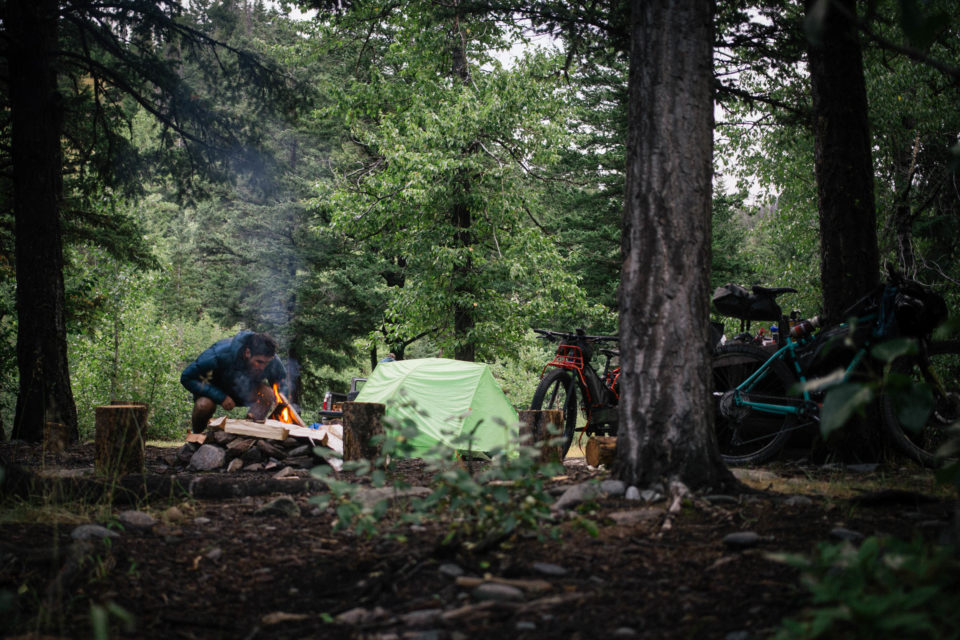Expedition vs. Racing: Two Ways to Bikepack
Looking back on nearly a decade of bikepacking experience, RJ Sauer took advantage of this global pause to reflect on the relative pros and cons of bikepacking racing and bikepacking expeditions. Find his thoughts on the unique merits of each here, along with an expansive gallery of images from Iceland, Morocco, Alaska, and beyond…
PUBLISHED Feb 4, 2021
With so many bikepacking and gravel races cancelled, postponed, or indefinitely furloughed to some dystopian future, I found myself wallowing with a needleless compass and a 2020 bikepacking schedule in shambles. I took some comfort from a smug faith that my niche bikepacking experience and my shed full of outdoor gear had prepared me for the looming, post-apocalyptic, post-pandemic life of nomadic survival. At the very least, I might persevere deep into season two of the forthcoming Netflix drama, The Bikepacking Dead.
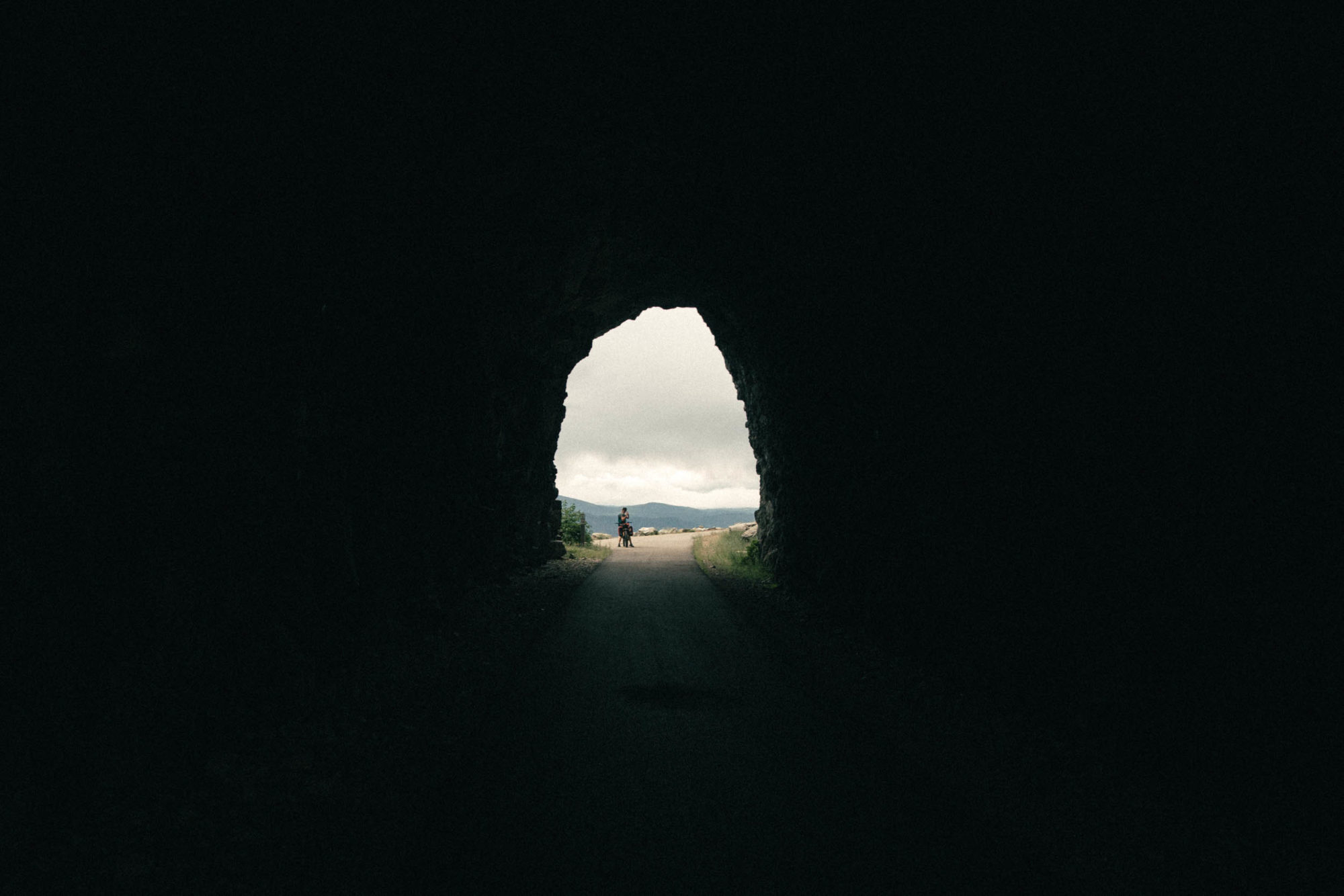
With borders shuttered and international travel lockdowns in place, I shifted my riding plans to local adventures and an open-ended training regime with no specific race application in sight. I retreated to the reliable locals, grinding up nearby mountains and dizzying backyard loops. It wasn’t long before the overlapping orange tracks on my Strava were thick with repetition.
Stuck in autopilot, relegated to my thoughts, I found solace reflecting on the past. I delved deep into the soul, whisking up memories and reflecting on my collective bikepacking adventures. Through my reverie, I found myself weighing the pros and cons of two similar but different bikepacking endeavours: the bikepacking race versus the bikepacking expedition.
Education is an endless curve and each of these disciplines has had a unique impact on my growth as a rider and a human being. For me, the balance of combining bikepacking racing and bikepacking adventures evolved into a dualistic, yin-yang of bike-based adventuring. In the hierarchy of cycling, they were the same genus, different species. Over time, I had come to appreciate the balance and diversity each brought to my bikepacking taxonomy, while delicately juggling a Venn diagram of work, family, fitness, and cultural curiosity.
In previous years, I sat down and mapped out my annual bikepacking plans. I anchored my training and yearly schedule around one long endurance bikepacking race. The main event. The rest of my schedule was a balance of other long, medium, and short adventures, categorized as either a race or an adventure. At times, the lines between them would blur. These might range from a multi-week expedition overseas to a simple weekend overnighter close to home. It could be a one-day gravel race or an epic cross-country competition.
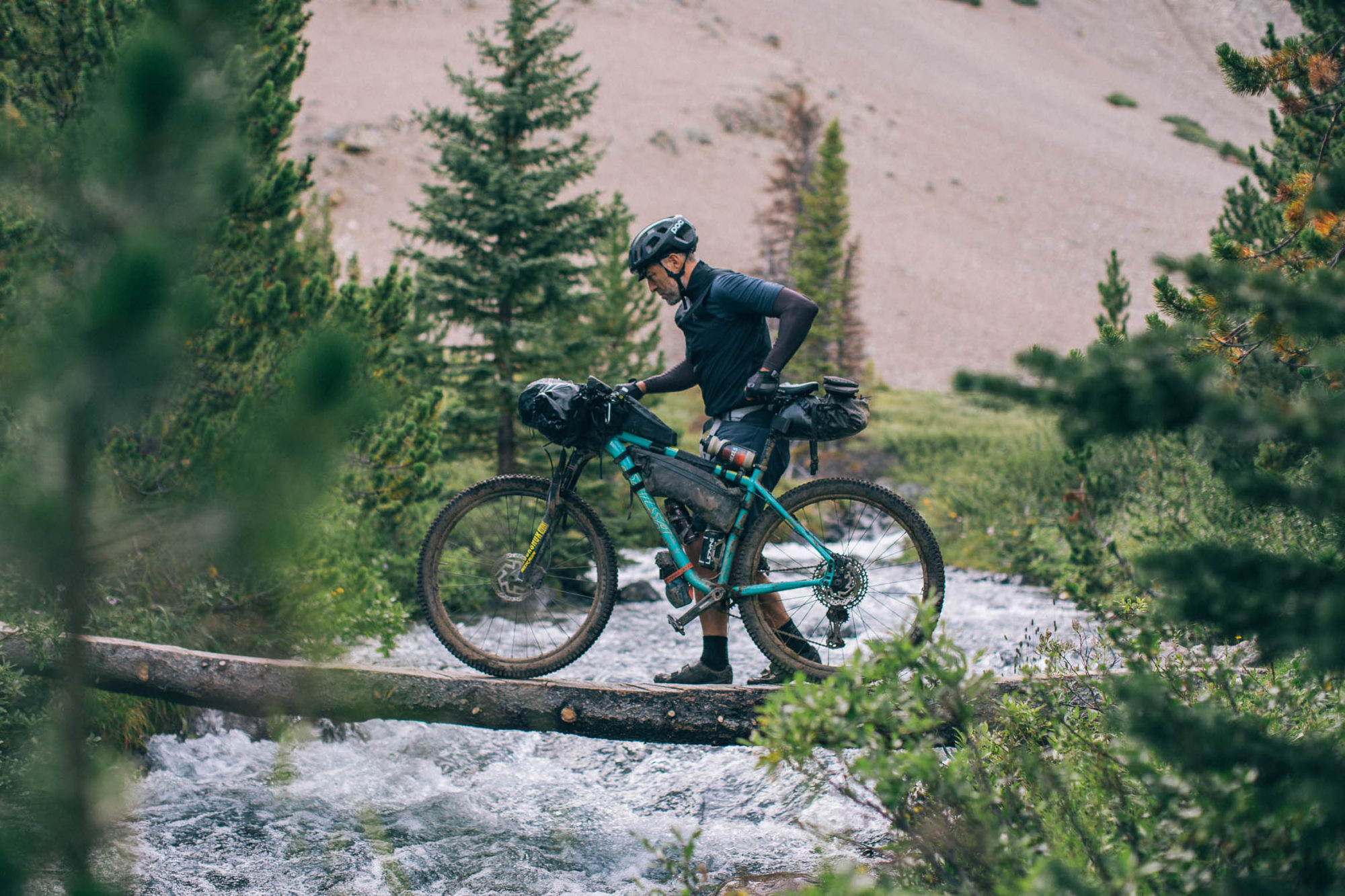
Certainly, there are those of you who have completed bikepacking expeditions and are considering a bikepacking race. Or maybe you’re a racer who only knows one gear and feels too competitive to slow things down. Or maybe you are neither, new to riding, and simply wonder where to start in this ever-expanding pursuit of bikepacking. Truly, its beauty is in its diversity. There’s no one formula for bikepacking nirvana, and with the right balance of racing and personal expeditions, I think you can find true enlightenment. Or at least, have a hell of a lot more fun riding your bike.
Here’s some perspective I’ve gleaned over the last eight years of bikepacking.
TIME
Time is a precious commodity. And it’s certainly a crucial variable when it comes to choosing bikepacking commitments and goals, both for the expeditions or races themselves, as well as the preparation beforehand, including route planning, gear prep, training, and travel to and from a destination. It’s important to be honest with ourselves and determine what a realistic bikepacking schedule looks like. Bikepacking races have fixed dates that are great motivators but they don’t allow the flexibility to schedule around other life commitments in the way personal expeditions do. For me, it’s been important to accept that I might have to cancel an event due to conflicting life or work commitments. It is better to allow ourselves the flexibility to drop out rather than not commit at all.
When it comes to the actual time in the saddle, I think of racing as bikepacking in concentrate. Naturally, everyone has their own pace, with goals varying from a podium finish to just crossing the finish line, but race adrenaline is undoubtedly a key motivator. The ebb and flow of fellow competitors, cut-off times, and personal ego push us to move faster, cover more ground each day, stop less, and ride through the darkness of night. Race pace is intense, invigorating, and exciting. It can pack a lot of terrain into a shorter period of time.

But with this expedited race pace and excitement comes a sacrifice. During a race, it’s harder to slow down or stop to relish in a place or moment. I have found myself in the middle of an event longing to stay and immerse myself in an experience. Sometimes I simply want to chill out and fully appreciate an incredible riverside campsite. Sure, this can be done, but there are competitive forces at work and they can be cruel and merciless. I still struggle to balance the scales of enthusiasm, teetering from the desire for competition to the reward of immersion.
In race mode, I also don’t take the time I would like to indulge in photography, one of my biggest bikepacking passions. Sure, my brain is flooded with snapshots, but it’s mostly relegated to my fading memory bank rather than my more permanent storage.
If you have the time, bikepacking expeditions beyond a local overnighter or weekend loop afford the opportunity to marinate in an experience. An expedition pace is slower and accommodates multiple riders. There is time to luxuriate in an environment, soak up a culture, enjoy a few personal luxuries, and indulge in deeper conversations with strangers. We sleep more, move less, and stick to daylight hours so we can appreciate the world around us.
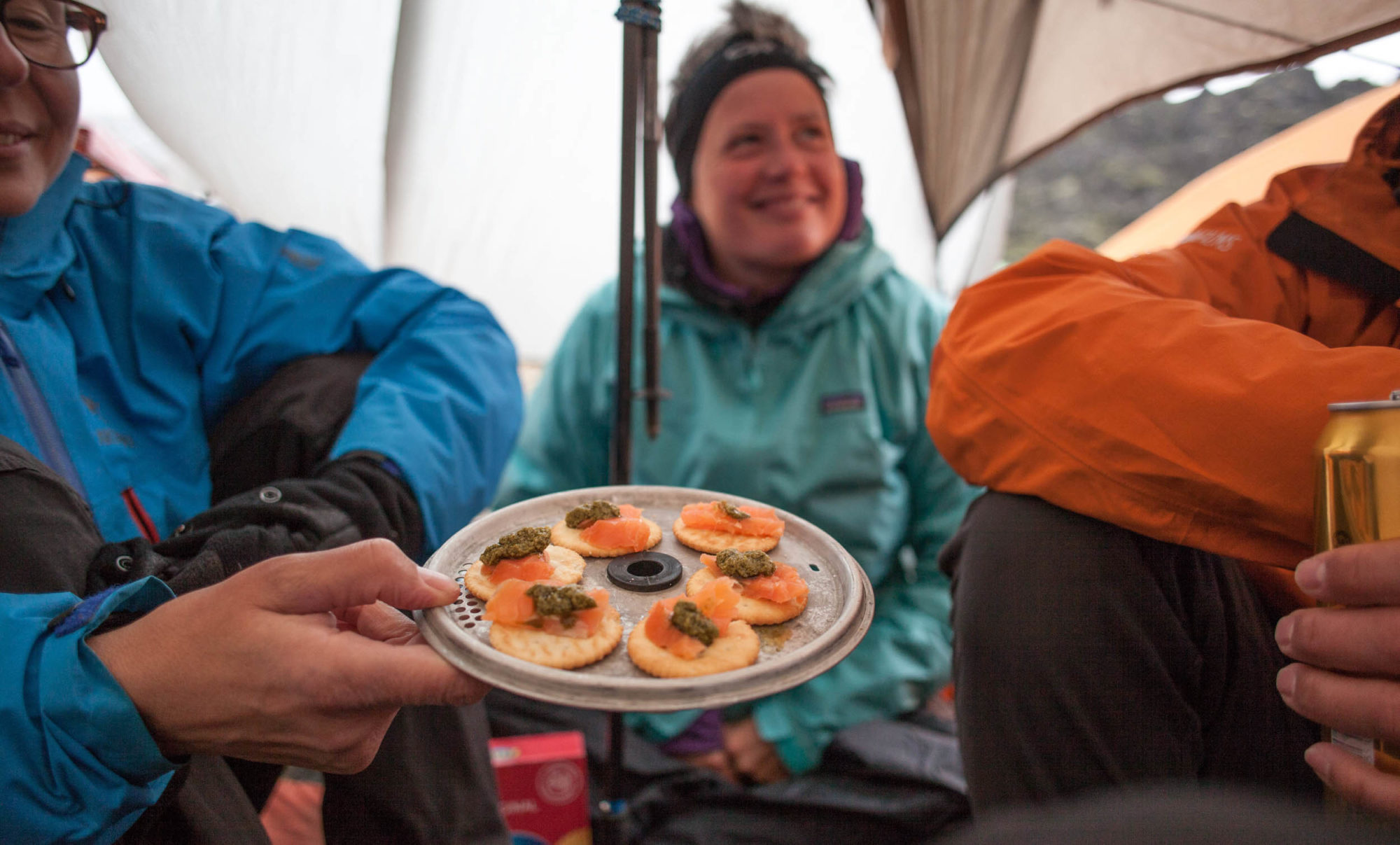
FITNESS & PERSONAL GROWTH
One advantage of regular bikepacking racing is the positive impact on fitness. Certainly, cyclists compete in races without a training regime, but this is ill-advised. The healthy fear of a looming start line and a competitive spirit generates accountability. This motivates me to train harder and in turn prevents injuries and boosts physical and mental tolerance. The training process is a rewarding journey unto itself. I have learned so much about my body, my mind, and my emotional capabilities, an invaluable catalyst for staying healthy.
That fitness and personal development directly translates to expedition bikepacking. With better fitness and a deeper understanding of my strengths and limitations, I can enjoy longer days in the saddle. I feel more comfortable on the bike, suffer less, and hurt less, which simply means I can cover more ground and have a fuller appreciation of the experience.
Beyond the health benefits, there are incredible opportunities for personal growth through bikepacking racing. There is something profound about the infusion of competition that can push us past our thresholds. It entices us to endure new levels of discomfort. In turn, it teaches us resiliency, independence, and new skills that translate across all facets of life. In my early races, I was always anxious to get to the next checkpoint or marker, which created an emotional headwind. Now, I better manage the complex dynamics of time, which allows me to be more present in the moment.
Above all, bikepacking races force us to face fears. When I started riding, I was irrationally uncomfortable riding at night. It was difficult for me to shut my brain off. With nothing to look at or fuel the mind, my imagination went haywire. It wasn’t a fear of the dark but an irrational anxiety. I struggled to relax and enjoy the unique characteristics. Over time, with continued exposure to these conditions, I embraced riding through the night and found joy in the solitude and its simple beauty, unlocking the hidden advantages: silence, clear roads, cooler temperatures, and strange creatures glaring at me from the shadows.
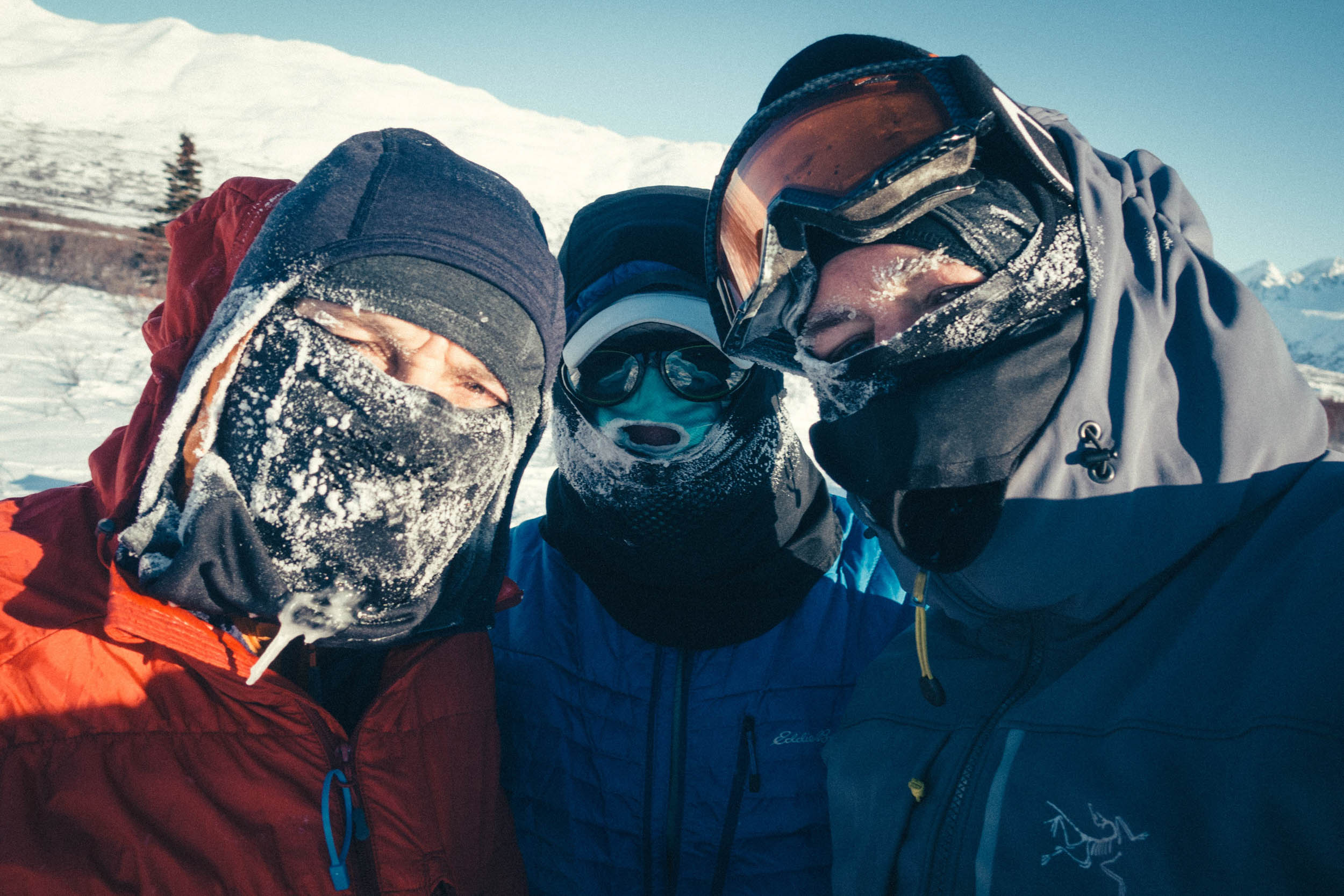
COMMUNITY & COMPANIONSHIP
Bikepacking racing and organized events are an excellent way to expand our cycling community. An organized event introduces us to a collective of dynamic people who share a passion for bikepacking. In discussion groups leading up to an event, at the start, and especially in post-race commiseration, there is a camaraderie forged up and down the roster, tethered to that shared endeavour.
The intensity of the race experience creates an expedited bond with fellow competitors. I’ve had many intense and profound encounters with strangers with whom I have shared the trail, united by the physical and psychological challenges of our similar goals. I call these people “fast friends.”
As time goes by, these fast friends have become enduring compatriots, popping up at other events or through shared dialogue, adventures, and ideas online, inspiring each other to attend future races or embark on grand expeditions.
On those grand expeditions, it is always nice to return to the familiarity and comfort of riding with friends or family. The deep camaraderie of those experiences together makes the time on the trail incredibly rewarding. It also facilitates travelling with like-minded individuals with similar goals, expectations, and pacing.
It can be lonely riding, training, and racing alone. But this time and introspection can be powerful and therapeutic. Some of my most profound moments were peaceful solo rides or races that allowed for a deep, unencumbered pride. Conversely, the bond of riding with others adds a depth and richness to the experience only achieved through forging shared memories. On occasion, deep into bikepacking races, I have imagined myself with friends and family, sipping beers or sitting around a roaring fire. Now, with a toddler in tow, that sense of community and companionship, the balance between bikepacking racing and expedition with family and friends, is even more critical.
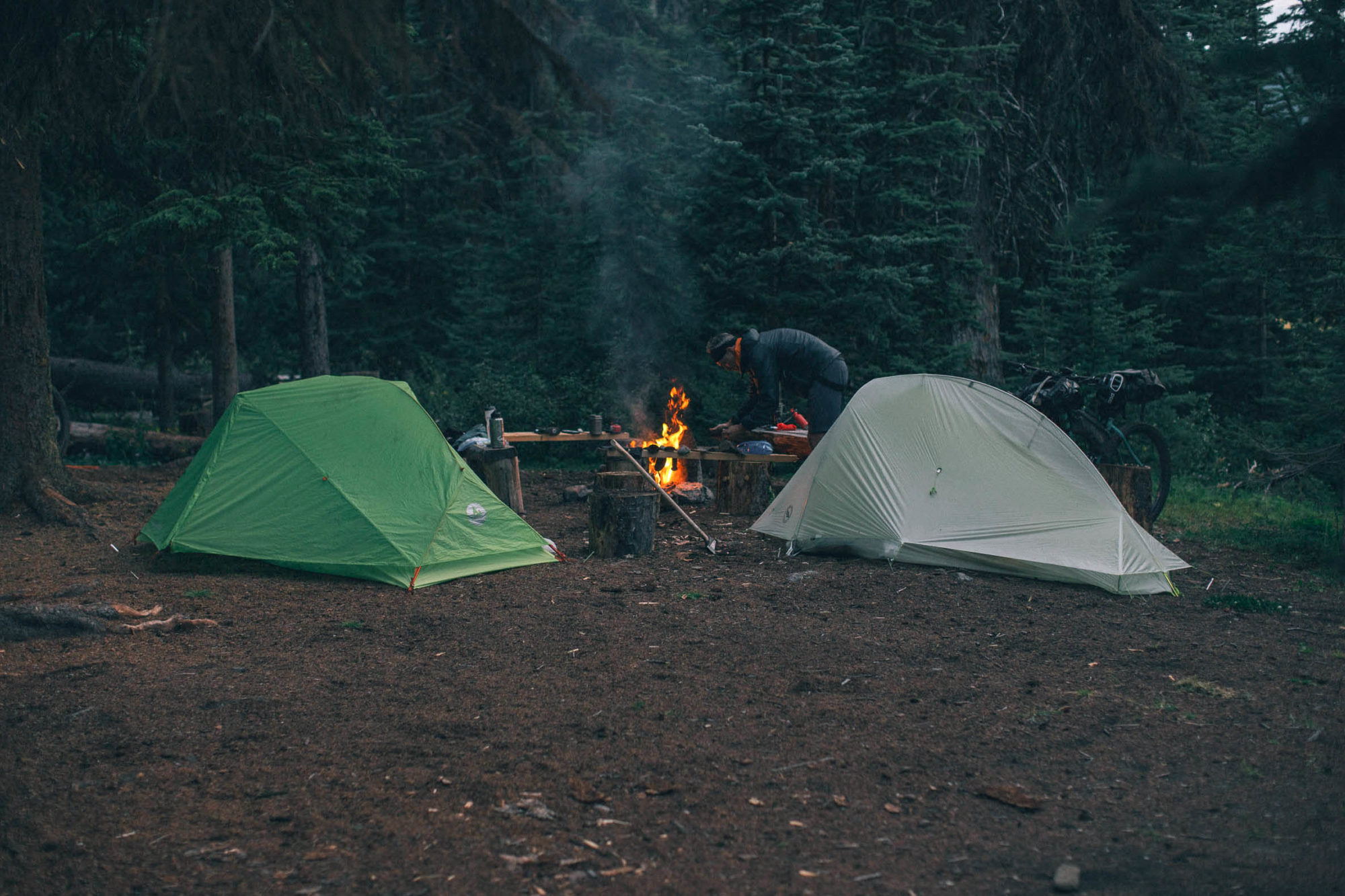
GEAR & BIKE MAINTENANCE
I came into cycling late. I didn’t grow up in the saddle and I never worked in a bike shop. I wasn’t a mechanic and was generally impatient with incessant gear talk and trailhead bike faffing. I mean, a wheel is a wheel is a wheel. Or so I thought.
When I started entering organized bikepacking events, the pre-race forums and banter were all balderdash and poppycock to me. In some ways they still are. The bike was always a conduit to geographical immersion and a catalyst for storytelling. Its role was to simply keep rolling.
With experience on the trail, I evolved from drive-trainee to true believer. Catastrophic gear failure in the wilds has a way of literally forcing me to shift gears. Time and the natural elements make fools of us all. With trial and plenty of error, I came to appreciate the nuanced mechanics of the bicycle. Rather than approaching online forums with skepticism and aversion, I embraced them as a virtual testing ground, full of invaluable recommendations and exclusive tricks of the trade.
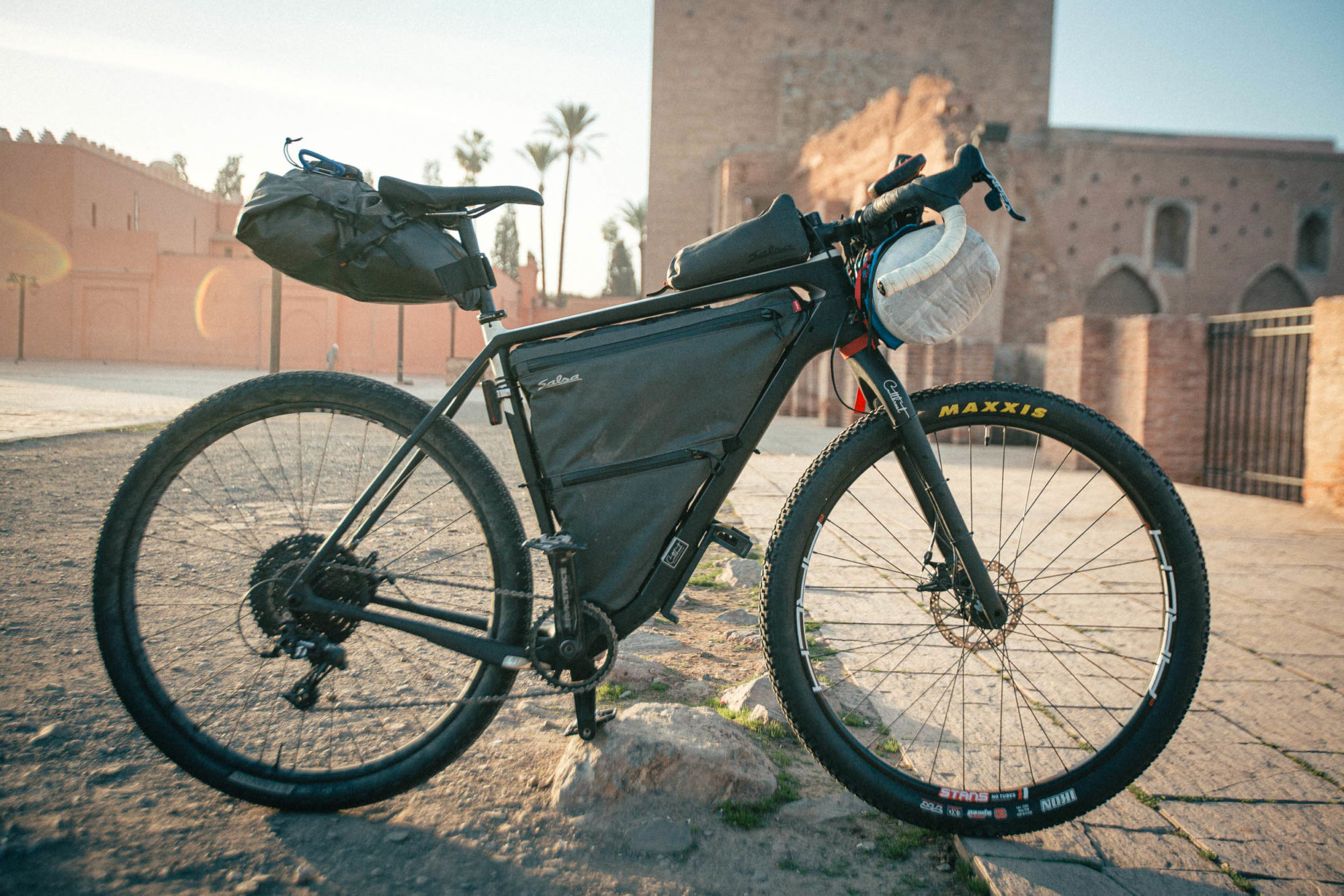
The bikepacking race is a (sometimes literal) crash course in gear discovery, a gateway from internet lab to mobile field testing. The incessant and intense miles of a race push components beyond their comfort zone, leading to inevitable mechanical setbacks, often in remote locations. This demands a level of preparation and offers invaluable hands-on learning. The need to change a fat tire tube in the middle of the night at 40-below in Arctic Alaska or converting a drivetrain to a single-speed in the midday, Moroccan sun has a way of accelerating a bike technician’s learning curve. Bikepacking expeditions aren’t devoid of mishaps, but there is no doubt races are a masterclass in mechanical engineering.
Approaching a bikepacking race versus an expedition also means a varied gear plan. Making good bike component or kit decisions ultimately results in more joy on the trail. Most importantly, carrying the right tools and equipment can keep you out of trouble.
On an expedition, there is an opportunity for more creature comforts: bigger shelters, thicker sleeping pads, extra clothes, better food, and even a foldable Scrabble board. It’s nice to not always obsess about weight, especially now that I’m a dad. Lugging our toddler, we make room for new essentials such as diapers and a slightly bigger tin of mutually beneficial chamois cream.
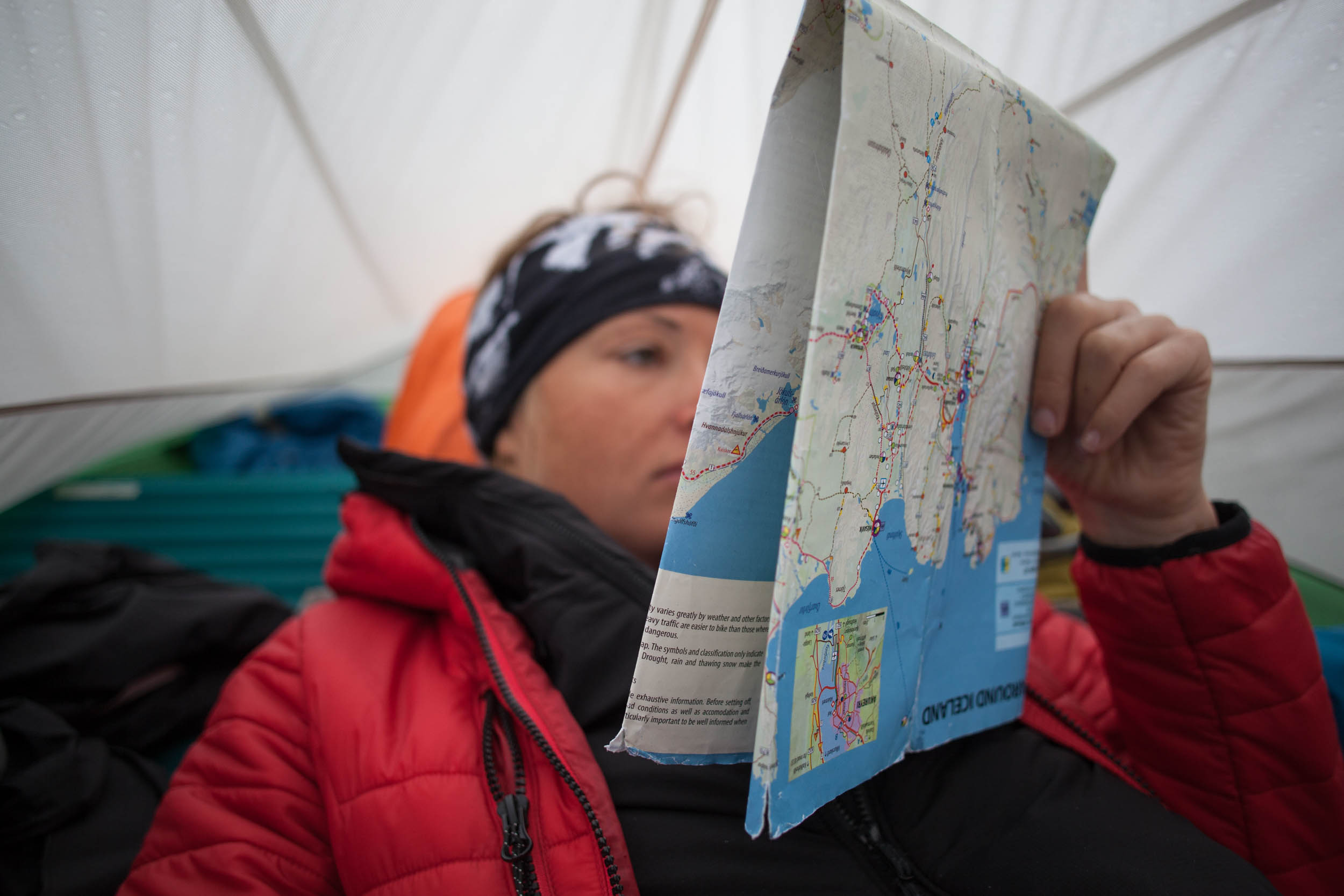
ROUTES & PLANNING
Most of us around here suffer from acute route-planning app addiction, endlessly manipulating those thin, lifeless lines on a digital map, manifesting a topographic tapestry of what we hope will be utopian terrain. Each new expedition is a blank canvas that unleashes an artistic license to plot a course from some new destination or landmark to the next. Bikepacking is one part planning, one part pedalling, fulfilling the primal satisfaction to chart new and exotic journeys.
As rewarding as playing omnipotent mapmaker can be, not everyone is confident or proficient with global exploration. A predetermined race route and even basic infrastructure provide a valuable safety net and support. Not to mention, it can provide unprecedented access to certain trails or areas not typically reachable by more traditional travellers. There’s something exhilarating and liberating about following the predetermined route of a race or event organizer—playing the pilgrim in someone else’s strange land. These unfamiliar race routes are the speed-dating of bikepacking, especially when accustomed to riding steadily along familiar local landscapes. New and unexpected terrain forces us out of our comfort zone, challenges our cycling skills, and expands our boundaries by thrusting us down that path of most resistance.
Although invigorating, a set course can undoubtedly deter spontaneity and deviation. The famous single-handed French sailor Bernard Moitissier knew this well. In 1968, approaching the finish line in first position in the inaugural around-the-world, Golden Globe Race after 10 months aboard his ketch, Joshua, he unexpectedly altered course back out to sea, lured by the adventure of the wilderness rather than the false adulation of completing the predetermined course. To each their own.
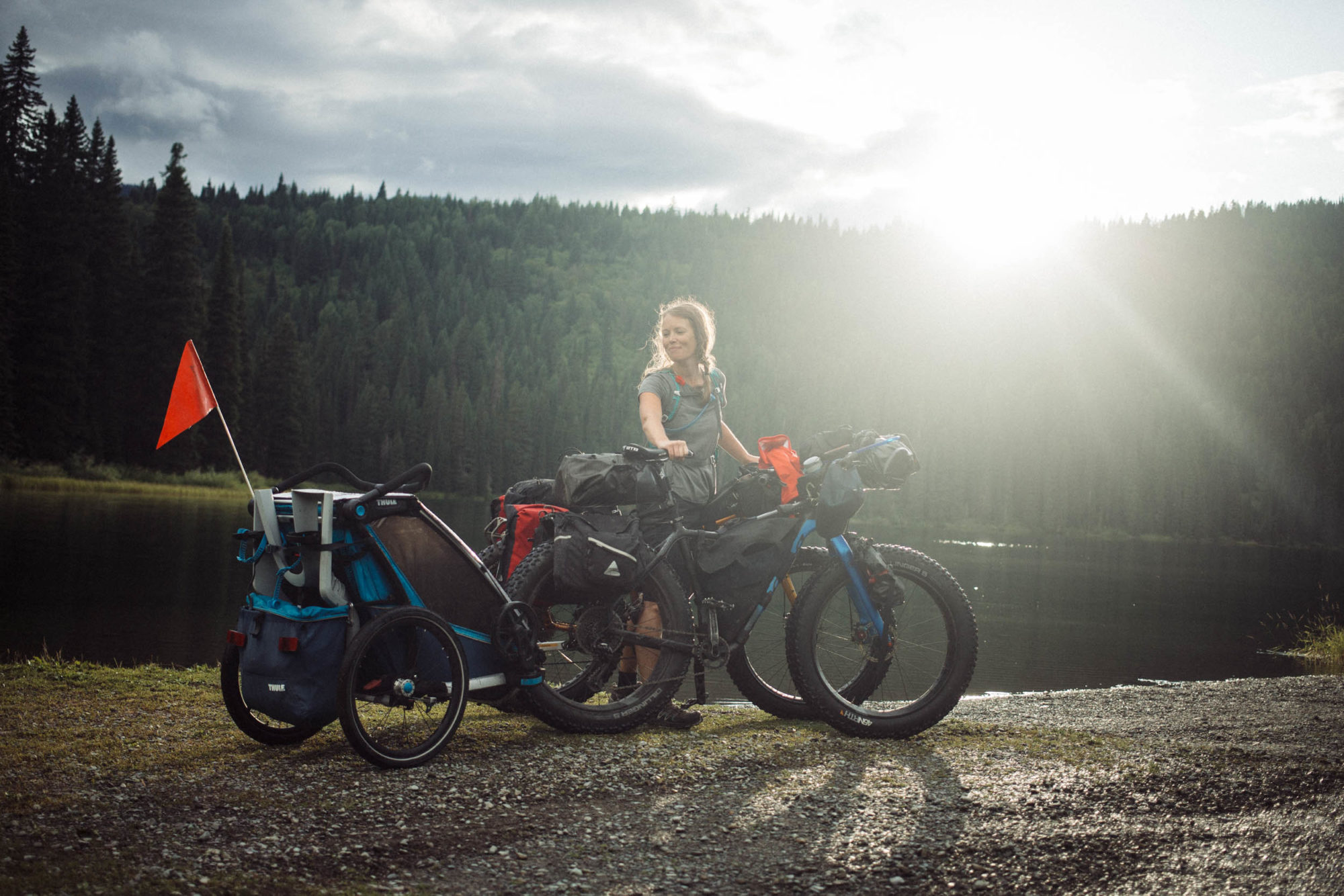
CONCLUSION
In the end, I believe it’s important to appreciate what is special and unique about each approach to bikepacking and what we hope to get out of our experiences. Racing and expeditions each bring their own joy and frustrations.
Hopefully, the choice between racing and expeditions doesn’t become an emotional tug-of-war and you can find a rewarding balance. I encourage you to start small and give something new a try. You have nothing to lose and so much more to gain.
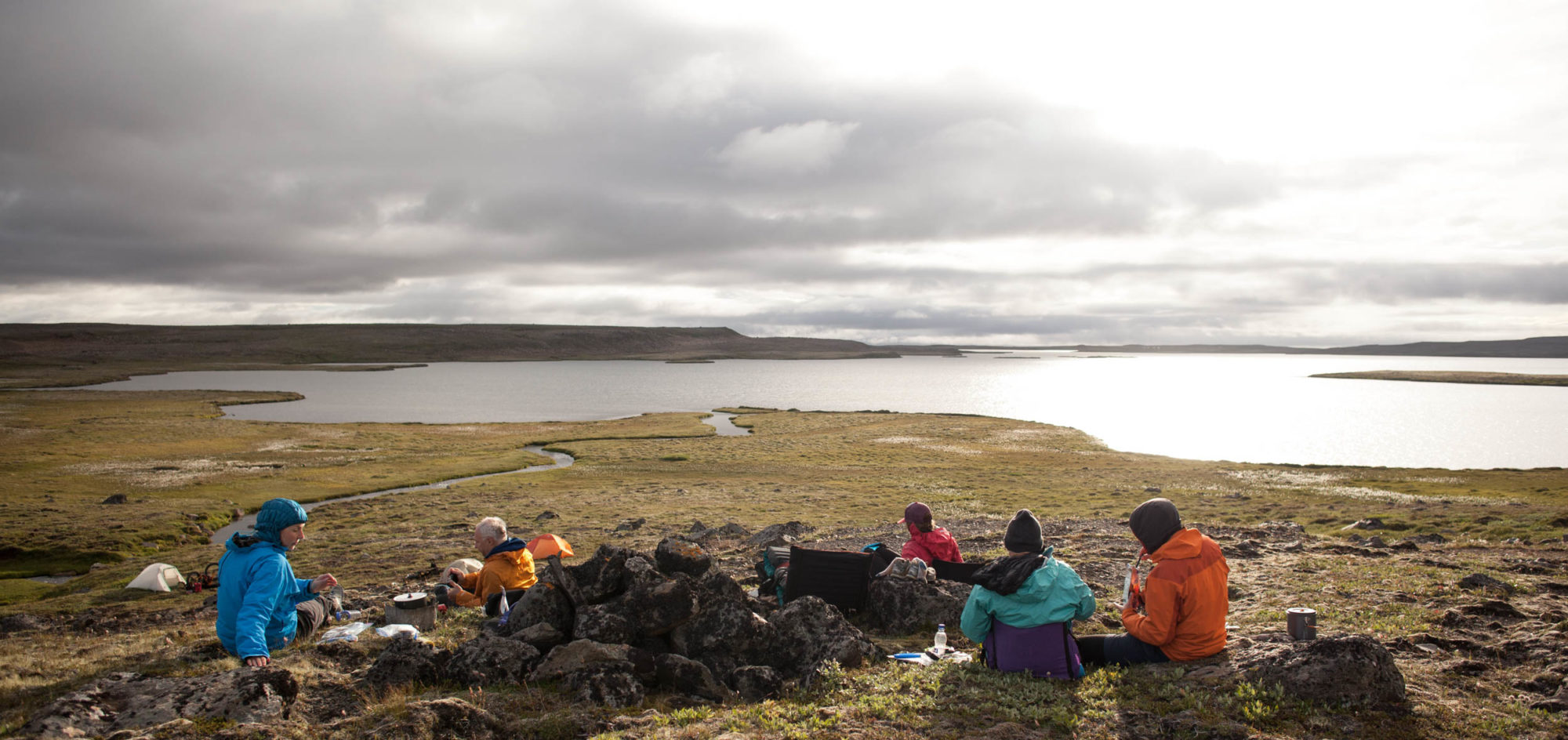
BENEFITS OF RACING:
- Jam-packing a route into a concentrated time
- Inspiration for bikepacking in new regions
- Motivation to expand your fitness level
- Pushing your boundaries and comfort zone
- Adrenaline and excitement of a race atmosphere
- Exposure to new, unexpected, and previously inaccessible trails and terrain
- Expanding the bikepacking community
- Getting creative with gear and consolidating your kit
BENEFITS OF EXPEDITIONS:
- Slowing down to a more comfortable pace
- Crafting your own unique route, experience, and schedule
- Camaraderie of riding with friends or family
- Chance to relish in a place, culture, or engage deeper with locals
- Easier to incorporate hobbies like writing and photography
- Conducive to carrying more or heavier gear for comfort
- Freedom to explore, adapt, and deviate from a plan
- More sleep
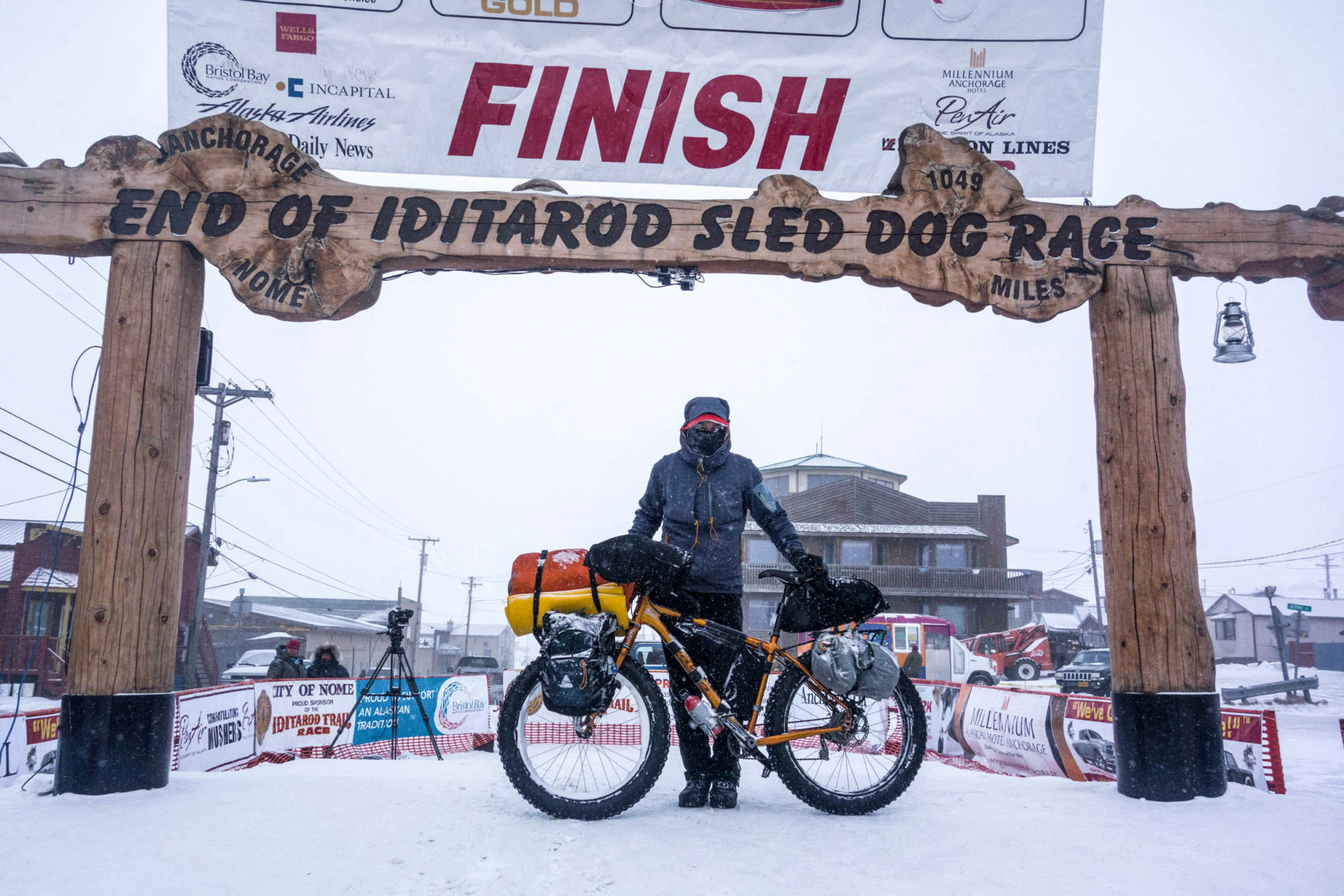
What’s your take? Let us know in the comments below!
Please keep the conversation civil, constructive, and inclusive, or your comment will be removed.







